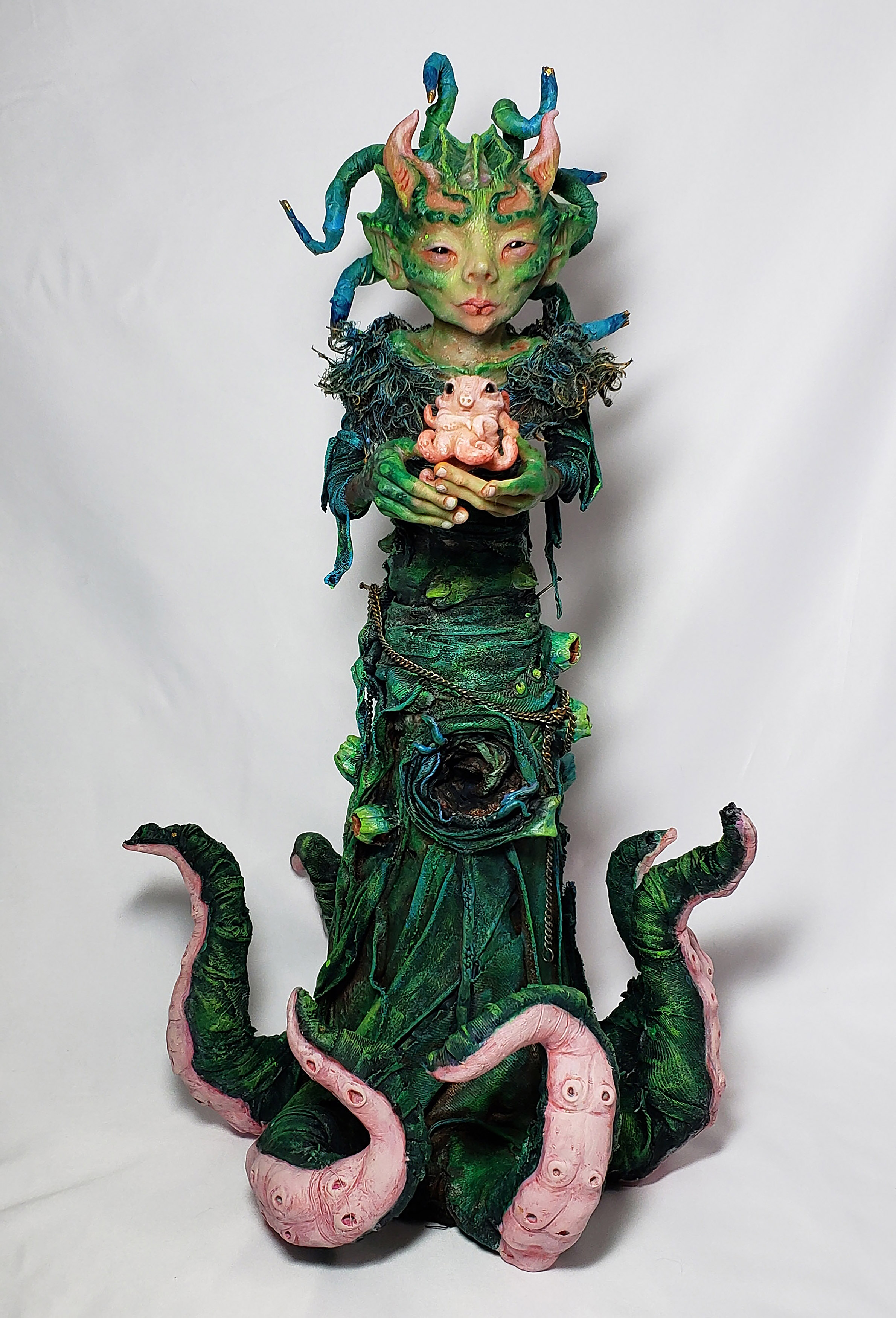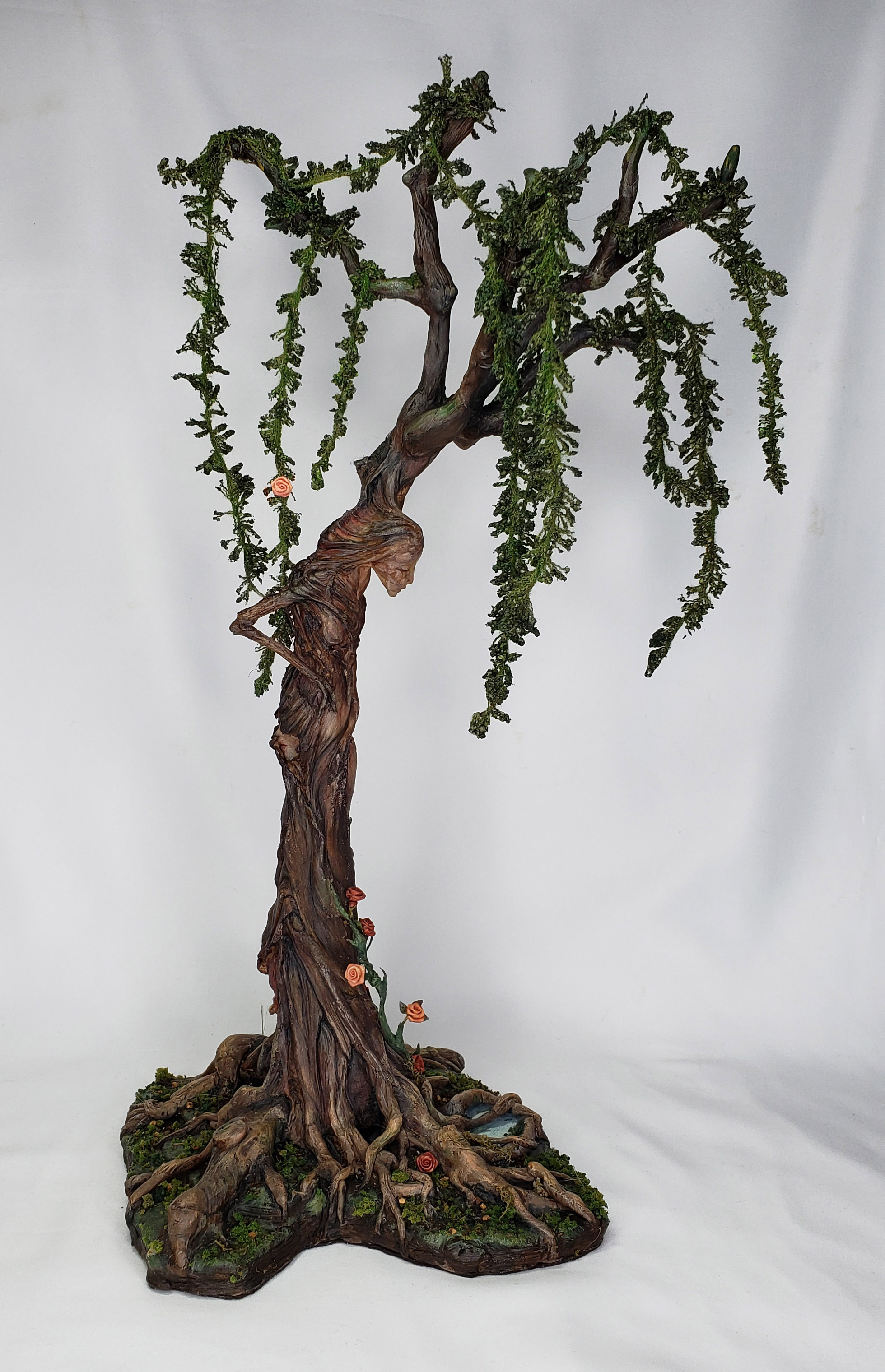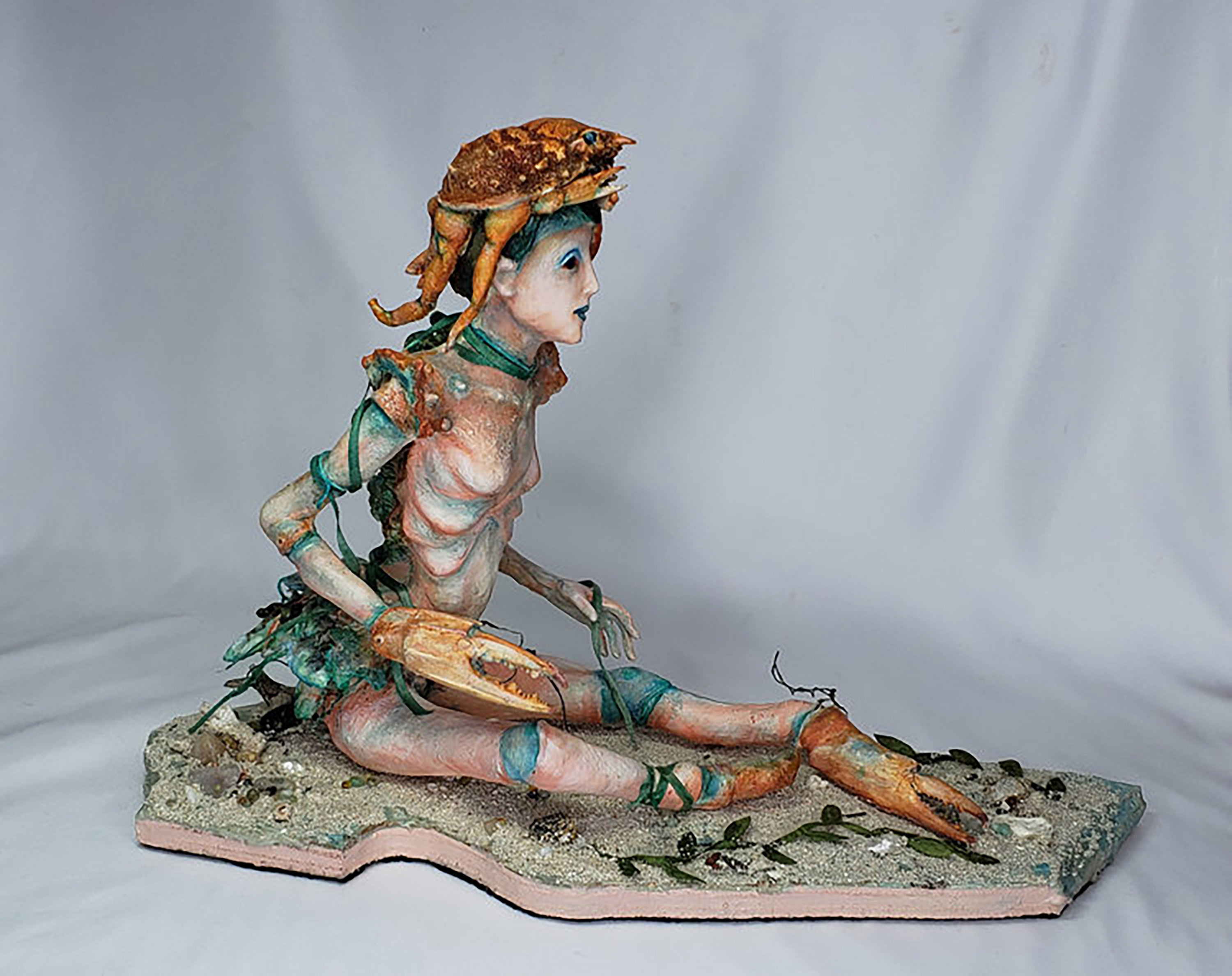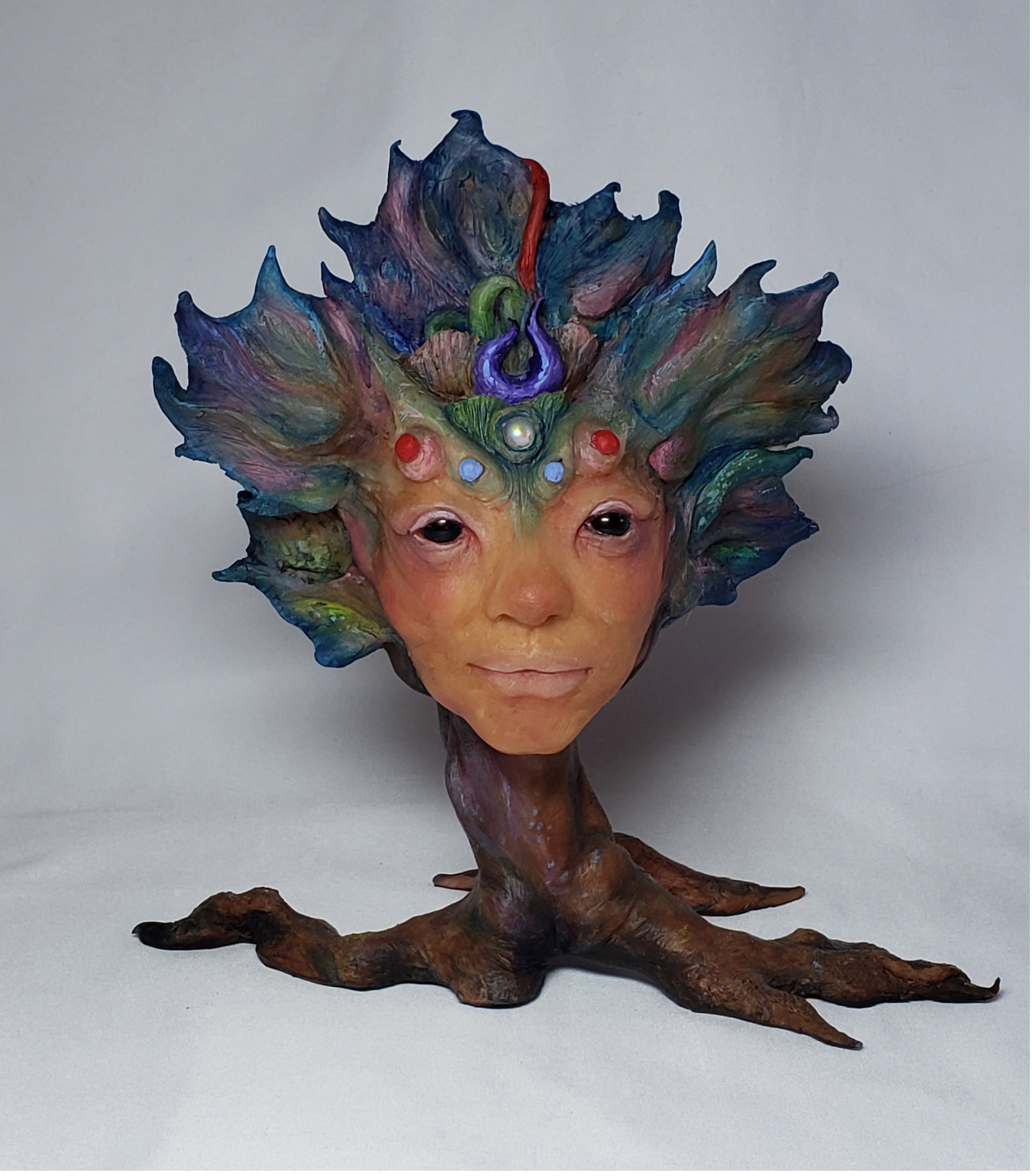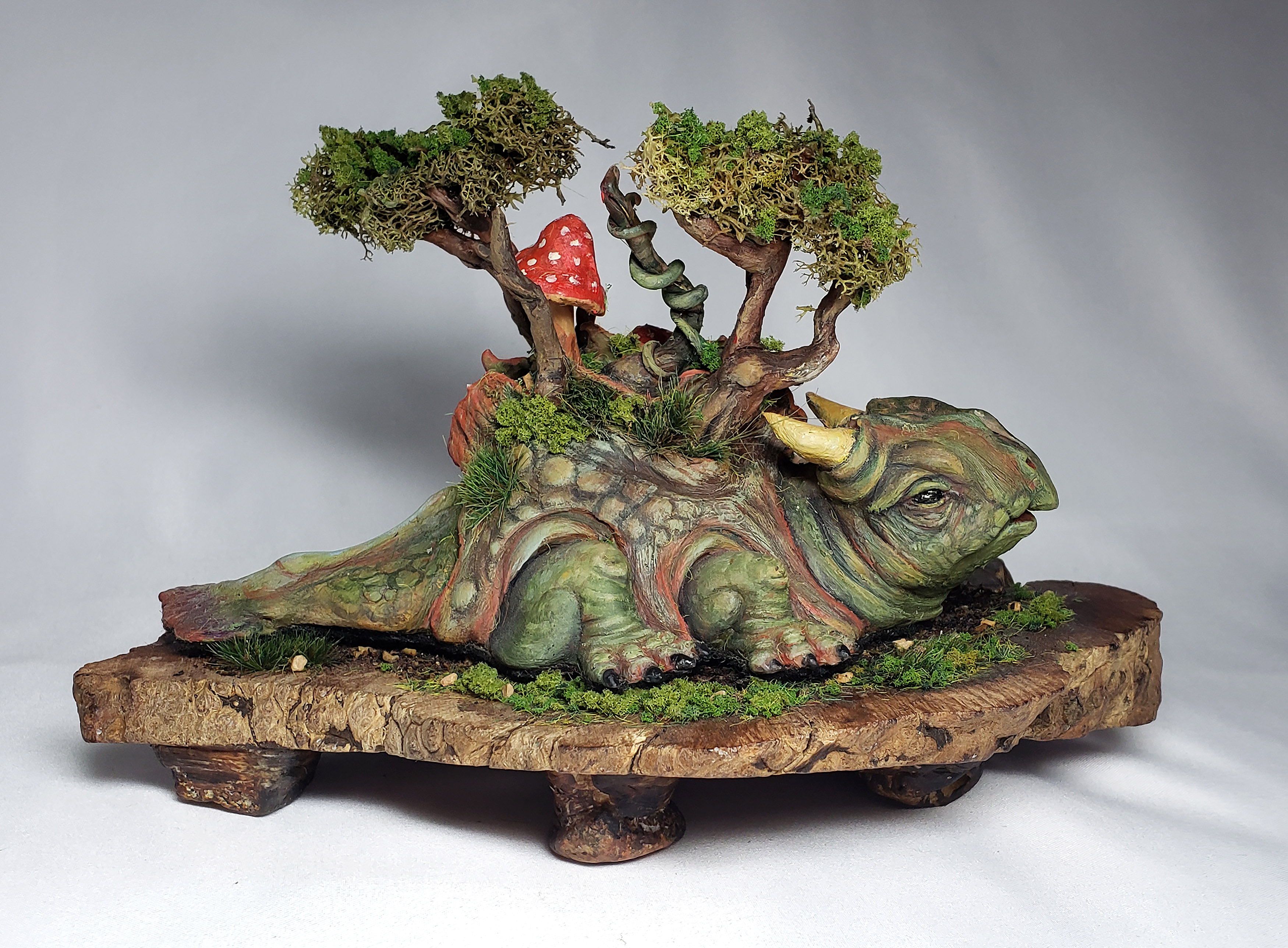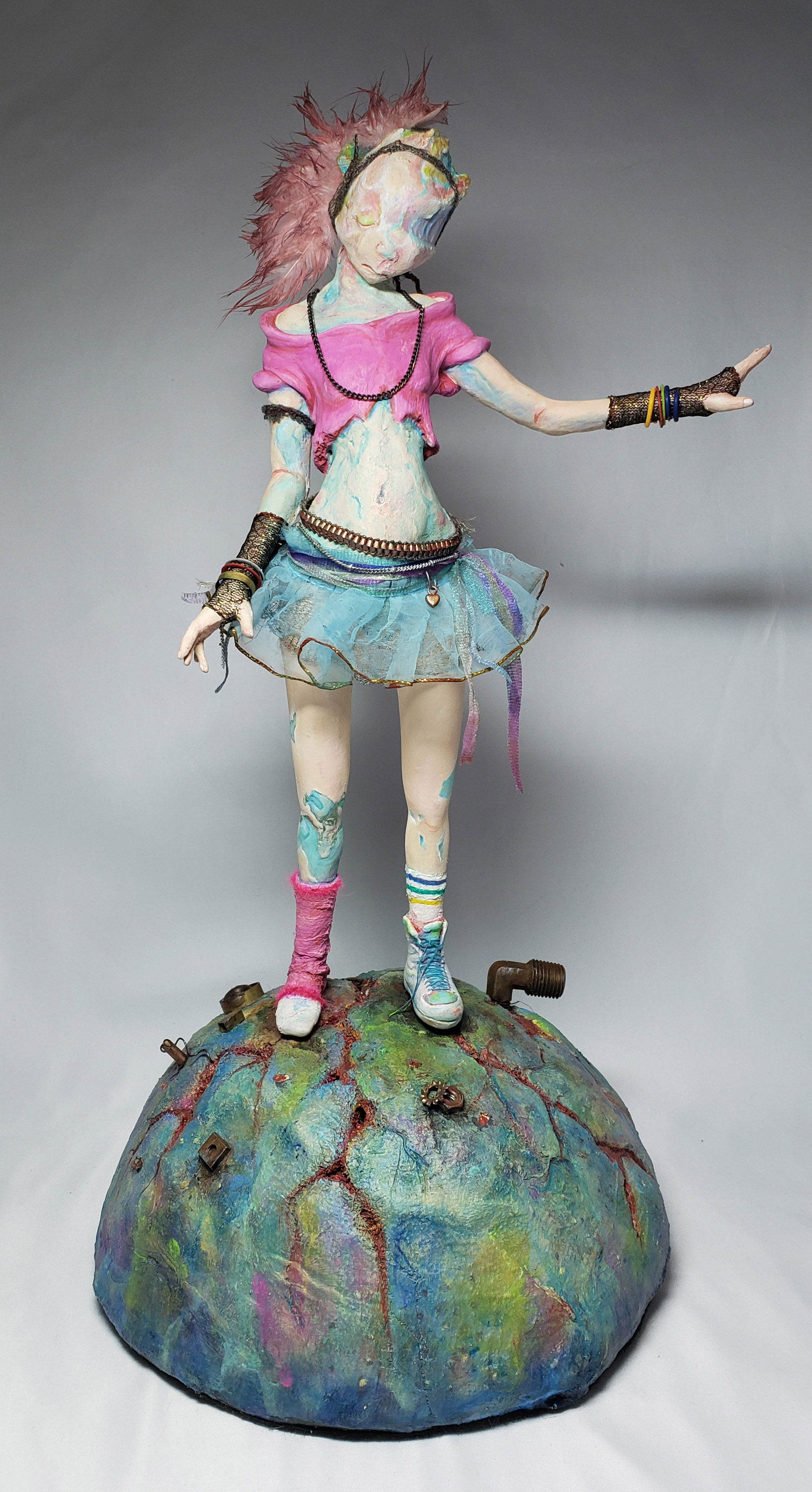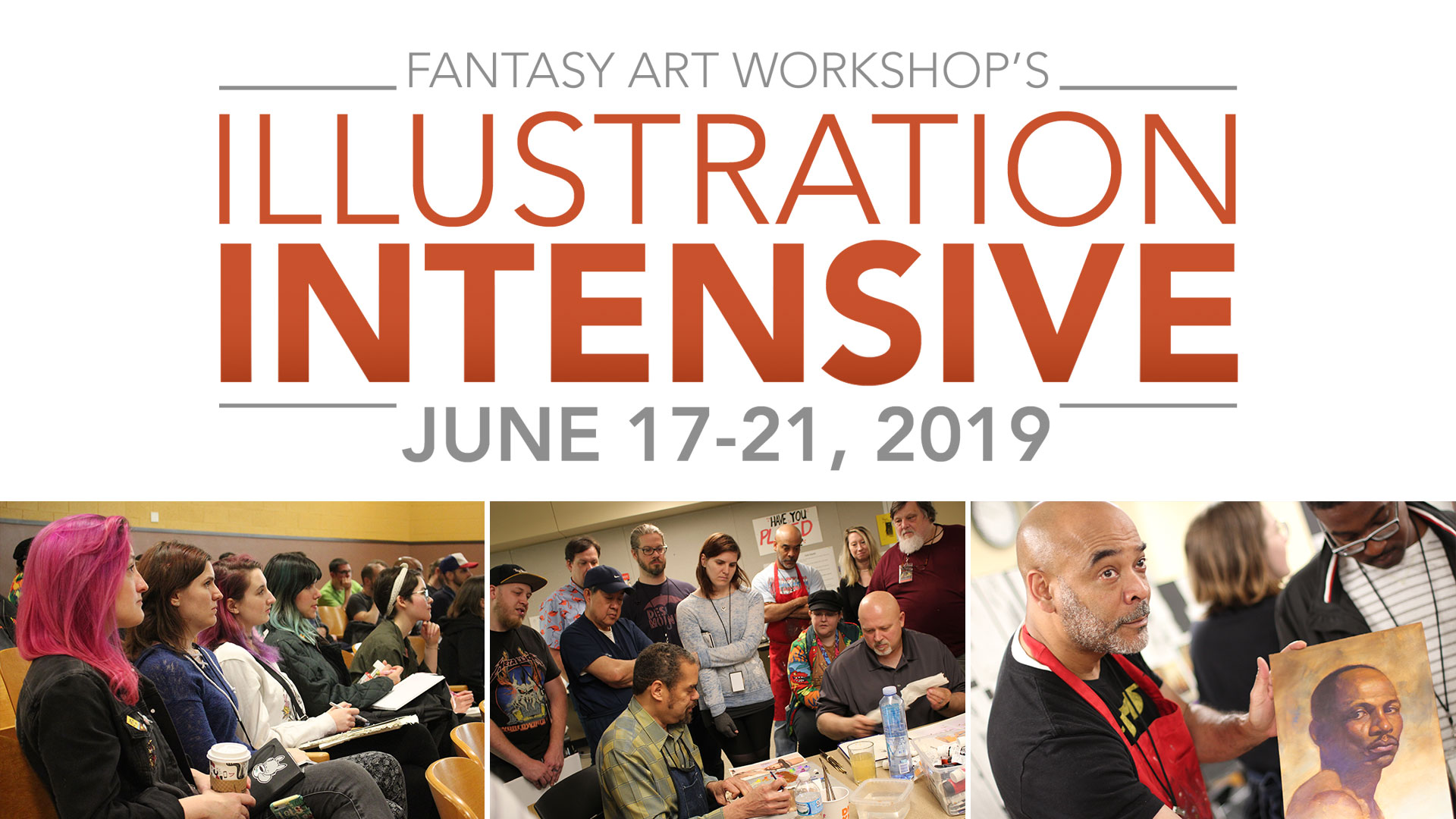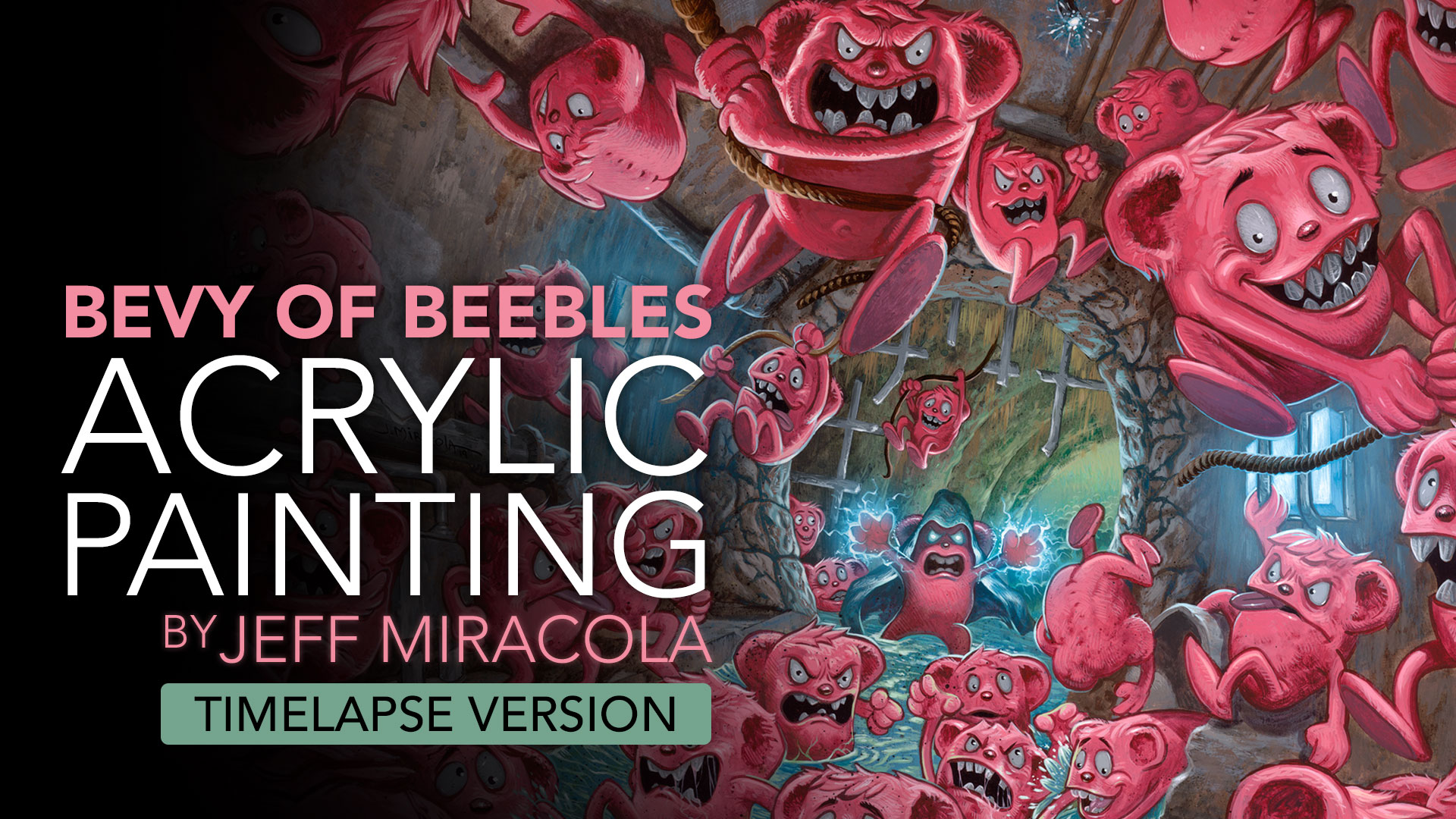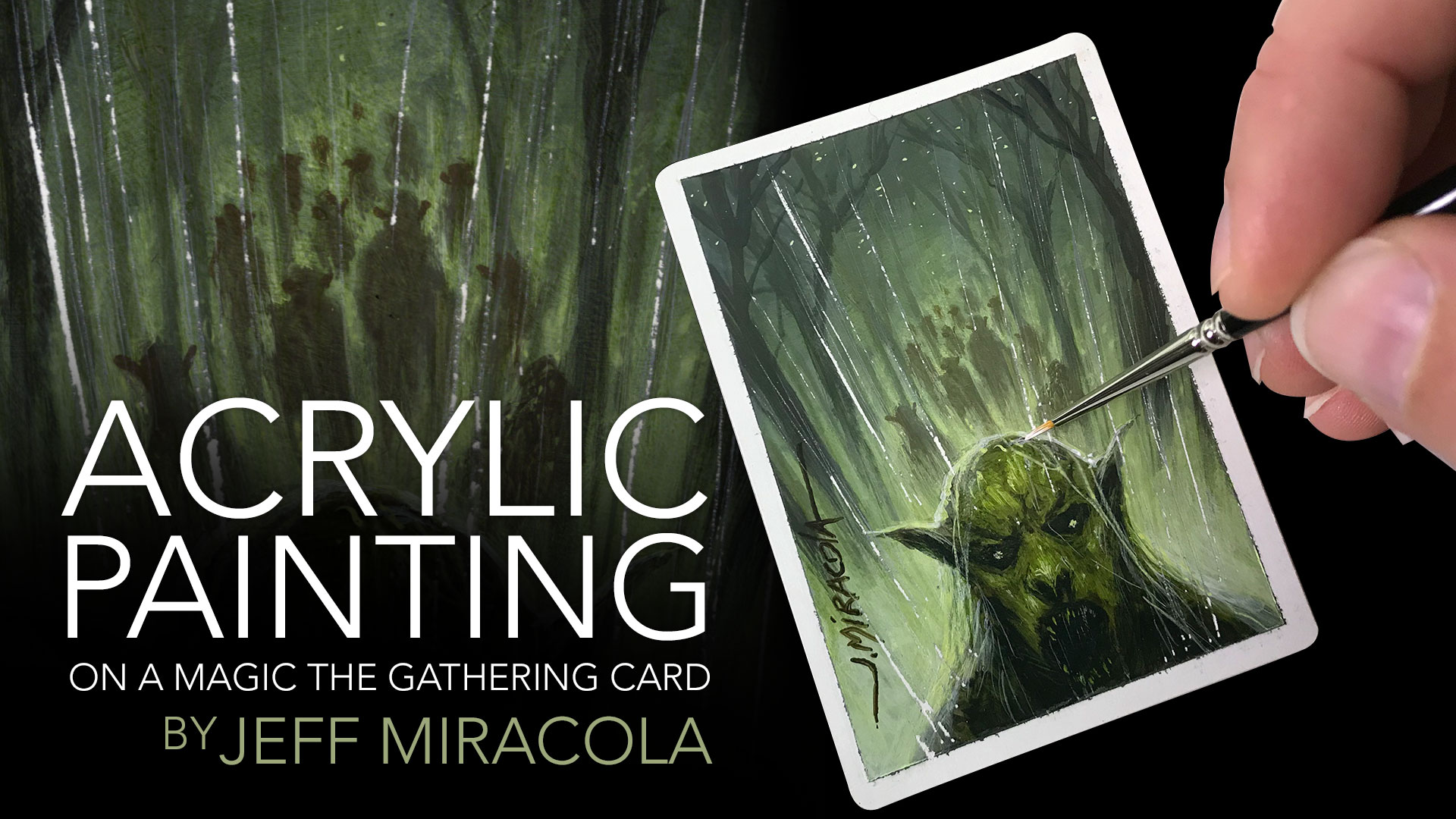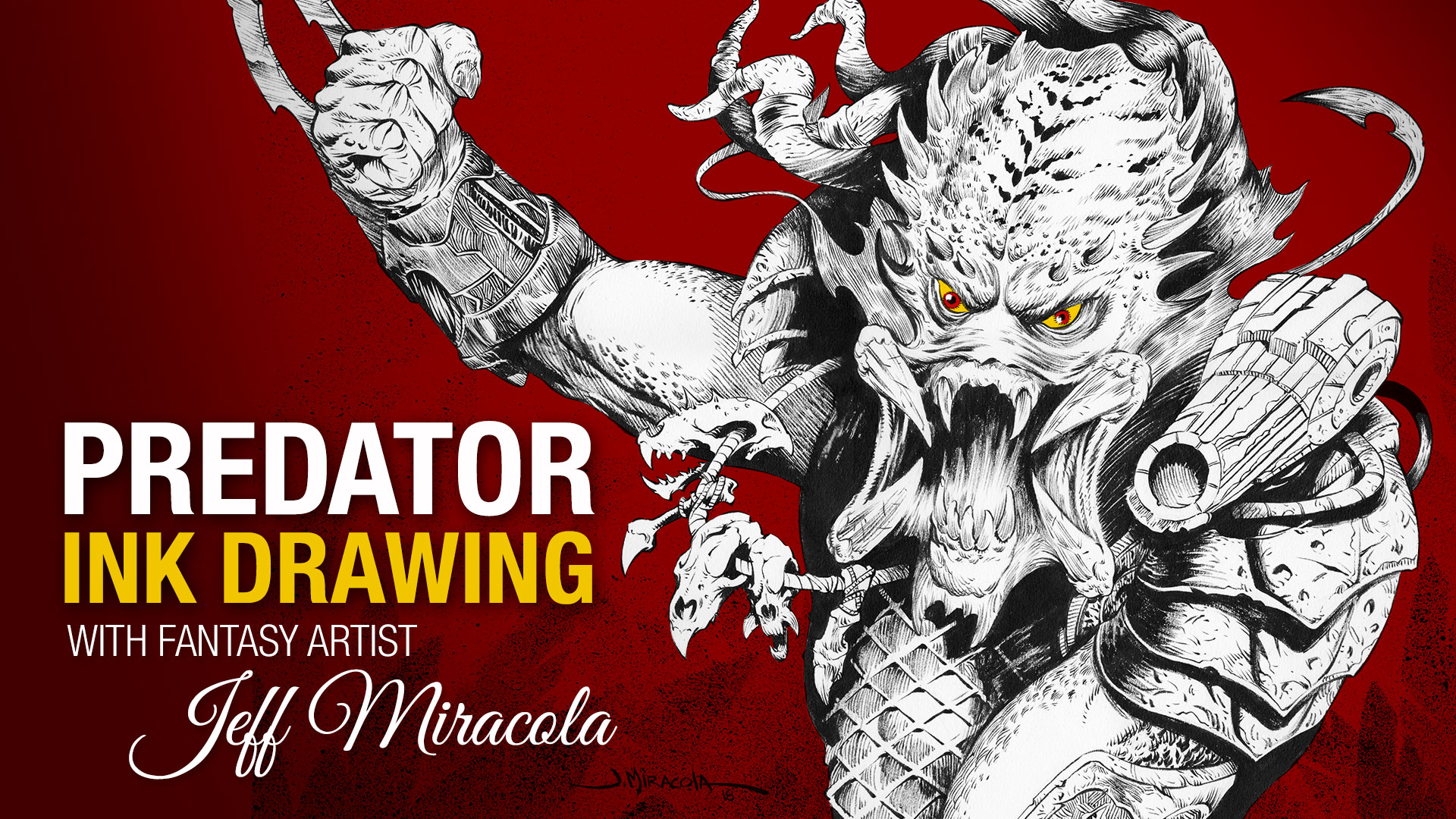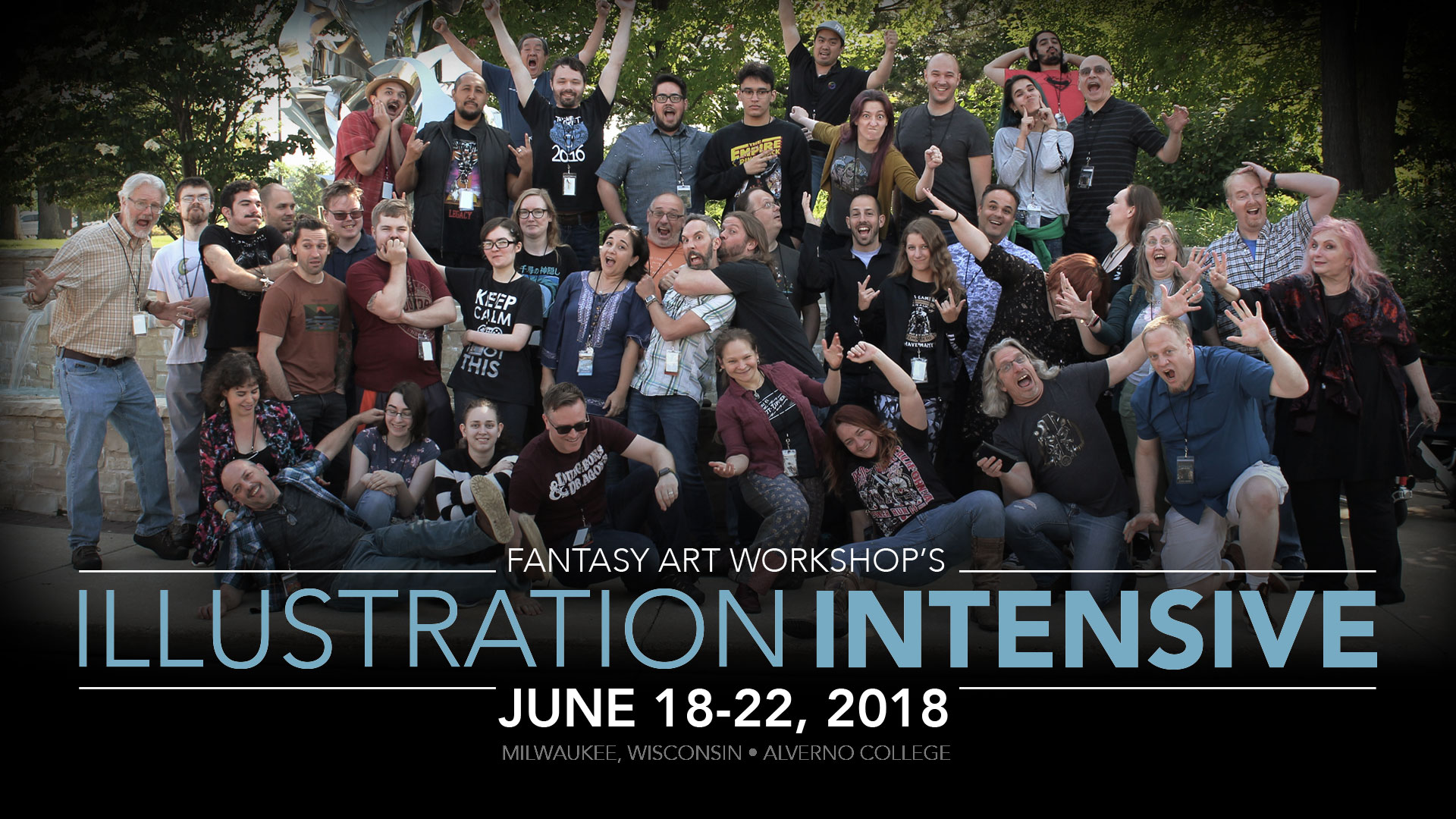You have an incredibly unique style of sculpture that incorporates many materials. Can you tell us about your process of selecting the right materials for your work?
Thank you! The entire process truly is a journey from start to finish. It usually begins by choosing a particular medium to work in based on the texture my hands need to feel or the desire to create in a certain scale. It seems strange to say but it’s almost as if something is guiding me. As the piece starts to form, then comes factoring in the rest of the armature for strength and stability but it’s usually determined as I’m working, not before.
My process differs from most sculptors in that they usually plan their pieces and construct the armature beforehand which saves them a lot of time and headaches.
Some even figure out the finishing touches in advance. My process is the opposite which can be really challenging but quite rewarding once a piece is complete. Some of the larger pieces were made using three or more different sculpting materials because different areas needed certain support or textures.
Planning beforehand was the perfect way to learn about anatomy, symmetry and armature building when starting out. Over time though, it began to feel really restrictive. When you are creating intuitively it’s impossible to do so if you have to conform to an armature or structure that’s already built. For me, trying to work that way was uninspiring. Only after learning to let go of those thoughts was I able to really connect to the pieces being created. The most exciting part of the journey is seeing a creature first emerge from the clay and again when it’s complete. It feels mysterious and wondrous since the mere thought of them didn’t exist before they did.
As far as the other materials that are used, I’ve always been inspired by nature and organic textures and items like stones, driftwood, leaves or shells but also bits and pieces of things found on the ground broken or discarded like glass or metal. In my studio I have bins with tiny drawers that line the shelves which hold these magical little fragments while they wait for their new purpose. Usually I’ll sculpt the head first and then there is a certain point when it starts coming together where I’ll open the drawers for inspiration. That’s where the fun really begins. Incorporating these items into sculptures helps me tell their stories and connect our world to theirs.
Do you create sketches of your ideas before you begin working on your sculptures?
I wish I could say yes but usually not. Sometimes when I get stuck on a piece I’ll sketch it out to work out a color, texture, body shape, or pose. There have been many times where a sculpture will be put on a shelf for many years and even though I’ve sketched out ideas, something still isn’t clicking. Occasionally it’s that the techniques needed to finish it haven’t been figured out yet. Sometimes though, it’s much simpler and it’s more textural.
My hamadryad “Willow” and humanoid crab “Orchitina” were both started about 8-10 years ago and were only recently finished. Most of the items used come from nature walks on the beach. On one of them, I noticed some poor little crabs had met their demise but the shells were mostly intact. It clicked that that’s exactly what Orchitinia was waiting for. I cleaned them and coated them in resin and they became her limbs and head piece. The natural color of the crab shell determined her coloring and she was finally finished. As you can imagine, this process can be really slow. Learning to embrace that as part of the process is ongoing. (Ha!)
What advice would you give to an artist who wants to start sculpting that you wish someone had told you before you started sculpting?
There are so many things that would have been super helpful to realize sooner when learning to sculpt.
- Doing research on the materials, techniques, anatomy etc., is great and necessary, but you will learn the most by doing. Just. Start. Sculpting.
- You don’t have to know everything about everything before you can start. You will learn as you go by practicing. Practice!
- There will be a lot of trial and error and you will learn from both. Mistakes are ok and breakage will absolutely happen!
- Take a deep breath, get over it, and fix it. You’ll learn from that too.
- Finish more pieces than not. Even if you know they are not your best, each step of the process will teach you something new.
- Take the time to learn structure and anatomy. Don’t be afraid of using reference to help you get it right.
- Once you learn the rules, you can then break them to create new creatures and beings that look realistic.
- If you learn properly you won’t have as many bad habits to unlearn. Refer back to your reference for refreshing as often as needed.
- There is no point in sculpting if you’re going to stress and make it unenjoyable, have fun!
What mentors, books, or philosophy has helped you along your artistic journey?
There seems to be subconscious influences from my childhood that appear in my work. Growing up in the ’80s was pretty magical… the cartoons, children’s books, the movies, the fashion! All of it definitely stuck with me. My first passion was drawing. In my early teens a friend gave me a Brian Froud Faeries calendar and it completely blew my mind open. A bit naive and sheltered then, I didn’t realize there was a world of fantasy artists creating art outside of what was seen in movies. It was really inspiring and made what I was drawing at the time seem less strange. It encouraged me to do more of it and to continue learning vs hiding it, literally. (Under the bed, behind pillows…)
When I began sculpting in 2005, there were not many sculptors I was familiar with or tutorials out there. I joined a beginner sculpting group online which was a safe environment for those starting out where we could share our trials and many, many errors. I was the co-owner for many years and while most members came and went, some became my biggest supporters and great friendships were formed. They gave me the push to keep improving and didn’t let me give up before I’d even gotten started.
While many people have been a part of my journey, my true mentor was mixed media artist Jean Bernard. I was already a sculptor when we met but she was the first to take me under her wing. She taught me how to use mixed media along with my sculptures to express myself in ways I was previously unable to. She constantly pushed me, fiercely, for years, to “let go” and once it finally happened, everything changed. Not just with creating either, it was permission to be my little weird self. I am forever grateful for this woman who put so much time, energy and belief in me.
Over the years I took some other workshops and learned through online classes and tutorials. Everyone I’ve encountered has been so supportive and many have become friends.
It’s quite surreal to be surrounded by, and work alongside the incredible artists I’ve admired for so long.
Because of the immeasurable support I’ve experienced, it will always be part of my journey to give back by sharing techniques and helping others.
Do you have any current or upcoming projects that you can tell us about?
Well, yes, yes I do! Possibly two! There may be a collaboration in the works, and the second is more of a goal at this stage but at the end of it there will be a visual storybook. I’m working on further developing my little world called “The Broken Planet” through new pieces, scenic paintings, and illustrations which will help tell the story of its history and inhabitants.
About Sprite
![]()
Sprite Hansen is a self-taught mixed media fantasy artist and creature creator. She’s found that through the combination of painting, drawing, sculpting, and mixing medias, she is able to express the mysterious world that inhabits her heart… and head. She draws the inspiration for her work from nature.
